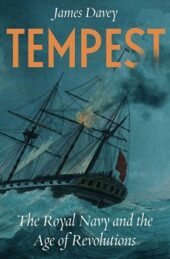Nelson’s Pathfinders is essential reading for Naval Historians. It is prescient that it is being published a year after the Admiralty announced it will be withdrawing paper charts and notices to mariners from 2026. For anyone unfamiliar with an Admiralty Chart it is a thing of both artistic beauty and scientific precision, describing both what lies above and below the water, collated with notes which enable anyone from a yacht skipper to an aircraft carrier captain to navigate the world’s waters. It is therefore a shock to discover that Nelson’s navy went to war without them.
Barritt’s book tells of the Admiralty’s faltering steps to establish a proper Hydrographical Office to collate charts and notes from the navy, and distribute them to its ship’s captains. Prior to this innovation Royal Navy Captains purchased charts, often locally, and obtained soundings and information themselves. The distribution of this information was erratic and often privately published. As late as 1806 ships such as the 64 gun HMS Athenian were foundering on reefs in the Mediterranean known since classical times. A lethal combination of lack of adequate charts and chronometers – the only means of telling longitude – meant more vessels were being lost to wreck than enemy action. HMS Victory herself lacked a chronometer, the point made by the then Navy’s frustrated hydrographer, Alexander Dalrymple, that the cost of equipping the entire fleet would be less than the loss of one warship, not to mention ‘the inestimable lives lost.’
Napoleon was the driver of change – the Royal Navy’s requirement to both blockade him on mainland Europe and support the British Army’s effort to defeat him on land forced them to navigate into unfamiliar waters from the Baltic to Mediterranean. Enter Nelson’s pathfinders, an unlikely cast from hydrographer Dalrymple, grappling with a lack of resources and piles of charts in Admiralty attic, to the frontline and Bounty mutineer sixteen year old Peter Heywood, spared and reinstated in the Navy ‘because he had not done growing’. His skipper, Captain William Bligh proved more useful to the navy than his nemesis Christian Fletcher, charting the hostile French coast including the entrance to Antwerp where the sandbar ‘Bligh Bank’ still carries his name. In other mentions Captain Francis Austen, Jane’s brother, Alexander ‘Audacious’ Brialy – who might have been a pirate in different circumstances – and Thomas Hurd, who succeeded Dalrymple at the Admiralty, but stands out for charting the approaches to Brest without access to the mainland by clambering onto rocks offshore to take his sightings.
These men made sure Napoleon’s blockade was secure. As Wellington put it ‘if anyone wishes to know the history of this war, I will tell them that it is our maritime superiority gives me the power of maintaining my army while the enemy are unable to do so.’ They also contributed to Britain’s projection of sea power from the River Plate to the Great Lakes, in the 1812 war with America along the Canadian frontier. This book is not for the light-hearted reader. Barritt’s research is meticulous, and the reader will require a working knowledge of the conflicts in which the pathfinders plied their trade, but they will be well rewarded for it. Barritt’s observations are revealing and he wisely includes numerous plates showing these men were both mathematicians and artists, sketches showing the approaches to an anchorage for navigation would be equally at home above any fireplace.
Tom Petch is a filmmaker and historian and the author of Speed, Aggression, Surprise.







